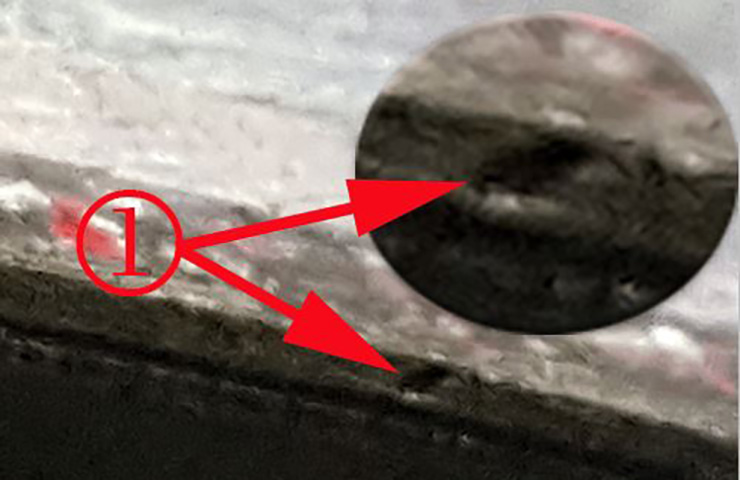
GM TechLink
May 17, 2019
Some 2014-2018 Silverado 1500, Sierra 1500; 2015-2019 Escalade, Tahoe, Suburban, Yukon; 2016 - 2019 Cadillac CTS-V, Camaro, Corvette; and 2019 Silverado and Sierra models equipped with the 4.3L engine (RPO LV1, LV3), 5.3L engine (RPO L83, L8B, L82, L84) or 6.2L engine (RPO L86, L87, LT1, LT4, LT5) may have white smoke and/or an engine coolant odor from the exhaust at a cold start or may run rough when the engine is warm. DTCs P050D (Cold Start Rough Idle) and P0300 (Engine Misfire Detected) may be set after a cold start.
Follow DTC Diagnostics
If these conditions are found, coolant may be entering the engine cylinders. Follow the diagnostics for DTCs P0300 and P050D in the appropriate Service Information. The Technical Assistance Center (TAC) is receiving calls for no trouble found after the engine has been disassembled and without the diagnostics for DTCs P0300 and P050D being completed. The checks covered in the diagnostics must be done prior to disassembling the engine.
The flow chart for P0300 will help validate that there is not an ignition or mechanical concern.
When checking the injector balance rates while following the flow chart for P050D, the engine must be cold. Be sure to include the injector balance rates on the work order. If an injector concern is found, replace only the affected injector.
TIP: If the injectors are being replaced on engine RPOs L86, LT1, LT4 or LT5, there are three different flow rate injectors offered. Be sure to install the same flow rate injectors back into the engine by checking the part number on the injector housing. Mixing the flow rates will cause drivability concerns, set DTCs, and require repeat injector replacements.
DTC P050D
During a cold start, the Engine Control Module (ECM) commands dual-pulse mode during Open Loop operation to improve cold start emissions. In dual-pulse mode, the fuel injectors are energized twice during each injection event. As with misfire diagnosis, the ECM monitors the crankshaft position sensor and the camshaft position sensor in dual-pulse mode to calculate crankshaft rotation speed.
In normal operation, optimum fuel delivery during dual-pulse mode produces a steady crankshaft rotation speed. If the variations of crankshaft rotation speed exceed a calibrated value, DTC P050D will set.
Coolant Entry
Misfires on start up only, with high rates always on one cylinder, can be suspect for coolant entry at the liner-to-deck face casting or the casting line in the intake port of the cylinder head.
To inspect for this condition, add coolant dye to the cooling system and warm up the engine to pressurize the cooling system. After warming the engine to operating temperature, let the engine cool overnight and then inspect the suspect cylinder with a borescope for coolant dye evidence. It may be necessary to remove the head for inspection.
If the head casting line is the issue, the intake port will be wet with a coolant and oil mix. This condition may cause the running rough while warm concern with or without DTCs set. The location where the coolant is running down in the port will look washed down. If this condition is found, the cylinder head will need to be replaced. (Fig. 13)

Fig. 13
For coolant entry at the liner-to-deck face casting of the cylinder bore, it is hard to see the actual source (pin hole) (Fig. 14), but it usually streams down the liner so it may be seen with a borescope. The top of the piston will be steam cleaned.

Fig. 14
Do not confuse residual fuel on the piston crown/surface as coolant. Some fuel residue may be present and can be mistaken as coolant, which is the reason for the cooling system dye to be added. Use a black light to confirm the liquid is coolant. If fuel residue is present, do not replace the cylinder head. Refer to the latest version of Bulletin #16-NA-338.
Small surface pock marks or a pitting appearance on the deck surface is normal and engines should not be replaced for this appearance as they do not connect to coolant passages and cause a leak path that generate engine misfires.
– Thanks to Richard Renshaw
Article ID: 17
Created: May 5, 2020
Last Updated: May 5, 2020
Author: Rob
Online URL: https://www.cadillacvnet.com/knowledge-base/article/2016-2019-cadillac-cts-v-gm-techlink-coolant-entering-engine-cylinders-17.html